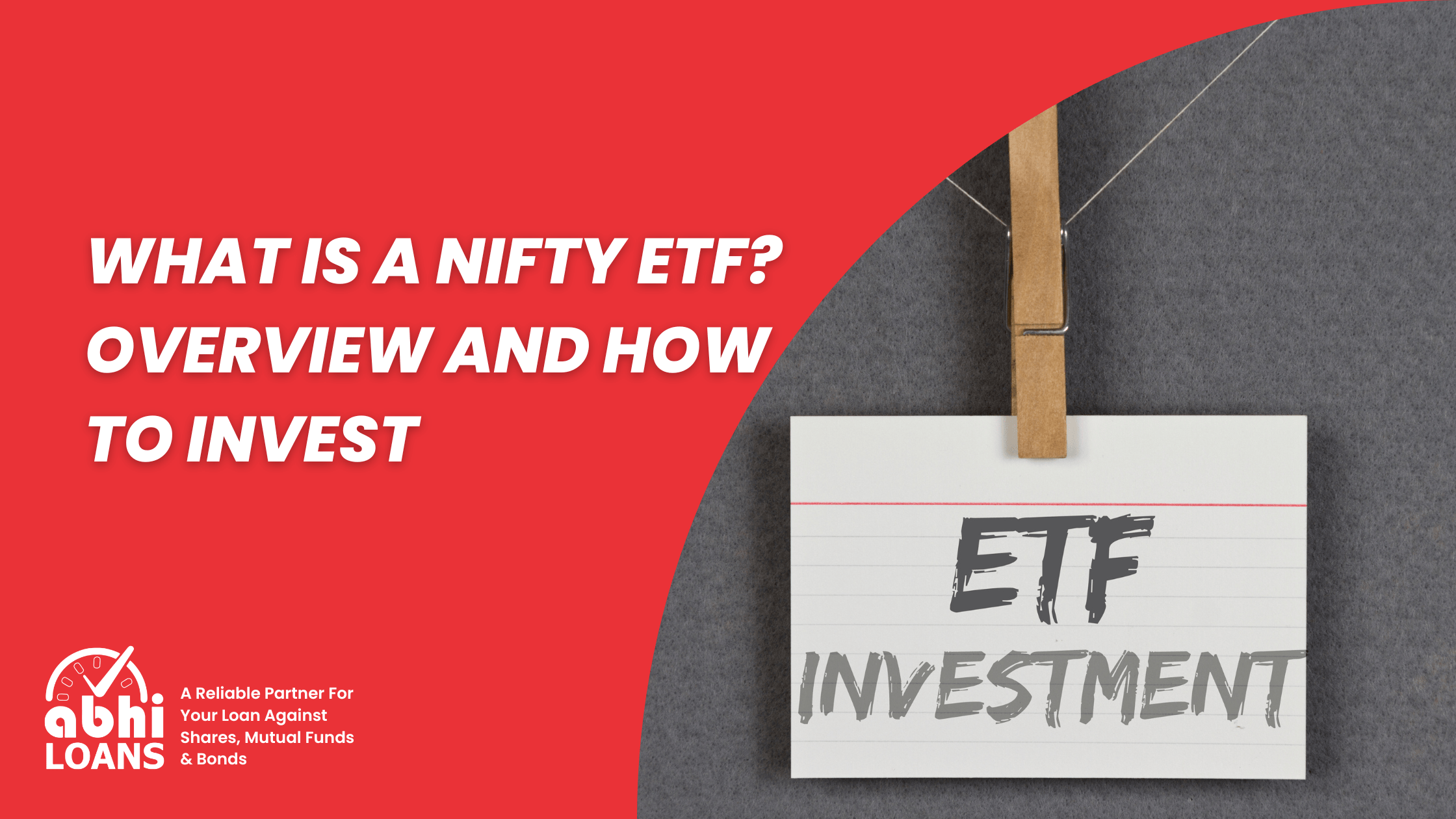What is NIFTY ETF? Overview and How to Invest
NIFTY ETFs have gained popularity among Indian investors seeking a simple yet effective way to invest in the stock market. These funds follow the NIFTY 50 index, allowing investors to gain exposure to the top 50 companies listed on the National Stock Exchange (NSE).
Exchange-traded funds (ETFs) are a selected investment vehicle due to their transparency, cost-effectiveness, and ease of trading. In this article, we will explore what a NIFTY ETF is, how it works, and how you can invest in one.
What is NIFTY ETF?
A NIFTY ETF (Exchange-Traded Fund) is a type of mutual fund replicating the performance of the NIFTY 50 index. The NIFTY 50 includes the top 50 companies from various sectors, representing the overall market. Unlike actively managed mutual funds, NIFTY ETFs passively track the index, making them a low-cost investment option.
Since NIFTY ETFs are traded on stock exchanges, their prices fluctuate throughout the trading day, just like individual stocks. This feature provides liquidity and flexibility for investors who want to enter or exit positions quickly.
How Does a NIFTY ETF Work?
NIFTY ETFs are designed to mirror the movements of the NIFTY 50 index. Here’s how they operate:
- Portfolio Composition: Fund houses create NIFTY ETFs by purchasing all 50 stocks in the same proportion as in the NIFTY 50 index.
- Passive Management: Unlike actively managed funds, where fund managers frequently change, NIFTY ETFs only adjust when the composition of the NIFTY 50 changes.
- Market Trading: Investors can buy and sell NIFTY ETFs on the NSE or BSE during market hours, just like stocks.
- Price Decision: The price of a NIFTY ETF fluctuates based on the performance of the underlying stocks and overall market conditions.
Benefits of Investing in NIFTY ETFs
Investing in NIFTY ETFs offers numerous advantages:
- Diversification: Since the ETF tracks the NIFTY 50, investors get exposure to various sectors, reducing risk.
- Low Costs: As passive funds, NIFTY ETFs have lower expense ratios than actively managed mutual funds.
- Transparency: The holdings of NIFTY ETFs are published daily, allowing investors to track their investments easily.
- Liquidity: NIFTY ETFs can be bought and sold in real-time on the stock exchange, providing better liquidity than traditional mutual funds.
- Tax Efficiency: ETFs’ capital gains tax is lower than that of mutual funds, making them a tax-efficient option for long-term investors.
How to Invest in NIFTY ETF
Investing in a NIFTY ETF is simple and can be done through the stock exchange. Here’s a step-by-step guide:
Step 1: Open a Demat and Trading Account
To buy NIFTY ETFs, you need a Demat and trading account with a registered stockbroker. Platforms like Zerodha, Angel one, and Groww offer seamless ETF trading.
Step 2: Choose a NIFTY ETF
Several fund houses offer NIFTY ETFs, including:
- Nippon India ETF NIFTY 50
- SBI NIFTY 50 ETF
- UTI NIFTY 50 ETF
- ICICI Prudential NIFTY ETF
- HDFC NIFTY 50 ETF
Compare expense ratios, tracking errors, and liquidity before selecting the right ETF.
Step 3: Place an Order
Once you have chosen a NIFTY ETF, place a buy order through your trading platform. You can choose between market orders (buy at the current price) or limit orders (buy at a specific price).
Step 4: Monitor Your Investment
Since ETFs track the index, you don’t need to rebalance your portfolio frequently. However, keeping an eye on market trends, changes in the NIFTY 50 composition, and overall economic conditions can help make informed decisions.
Factors to Consider Before Investing in NIFTY ETFs
Before investing in NIFTY ETFs, consider the following factors:
Expense Ratio
The expense ratio reflects the cost of managing the ETF. Investor returns are better when expense ratios are lower.
Tracking Error
Tracking error is the difference between the ETF’s performance and the NIFTY 50 index. Lower tracking errors indicate better fund management.
Liquidity
Some NIFTY ETFs have higher trading volumes than others. Opt for ETFs with higher liquidity to ensure smooth buying and selling.
Investment Horizon
NIFTY ETFs are suitable for long-term investors who want market-linked returns with minimal management.
Taxation of NIFTY ETFs
NIFTY ETFs are taxed similarly to equity investments:
- Short-Term Capital Gains (STCG): If held for less than a year, gains are taxed at 15%.
- Long-Term Capital Gains (LTCG): If held for more than a year, gains above ₹1 lakh are taxed at 10% without indexation benefits.
Risks Associated with NIFTY ETFs
While NIFTY ETFs offer many advantages, they also come with certain risks:
- Market Volatility: The ETF’s value fluctuates with market movements, exposing investors to potential losses during downturns.
- Tracking Error: Some ETFs may not perfectly track the NIFTY 50 index due to fund management inefficiencies or liquidity issues.
- Liquidity Risk: Although ETFs are liquid, certain funds may have lower trading volumes, making it harder to buy or sell large quantities without affecting prices.
- No Active Management: Unlike mutual funds, NIFTY ETFs do not have fund managers making strategic decisions, which can be a disadvantage in uncertain markets.
Comparison of NIFTY ETFs with Mutual Funds
| Feature | NIFTY ETFs | Actively Managed Mutual Funds |
| Management | Passive | Active |
| Expense Ratio | Low | High |
| Liquidity | High (traded on exchange) | Lower (NAV-based transactions) |
| Tax Efficiency | More tax-efficient | Less tax-efficient |
| Tracking | Follows NIFTY 50 | Can deviate from the benchmark |
Conclusion
NIFTY ETFs are a great investment option for investors looking to invest in the Indian equity market with lower costs and minimal effort. They offer diversification, liquidity, and tax efficiency, making them suitable for both beginners and seasoned investors.
By choosing the right ETF, monitoring market trends, and holding investments for the long term, investors can maximize their returns while minimizing risks.
However, it is essential to be aware of market volatility, tracking errors, and liquidity risks before investing. With a well-planned approach, NIFTY ETFs can be a valuable addition to an investor’s portfolio.

